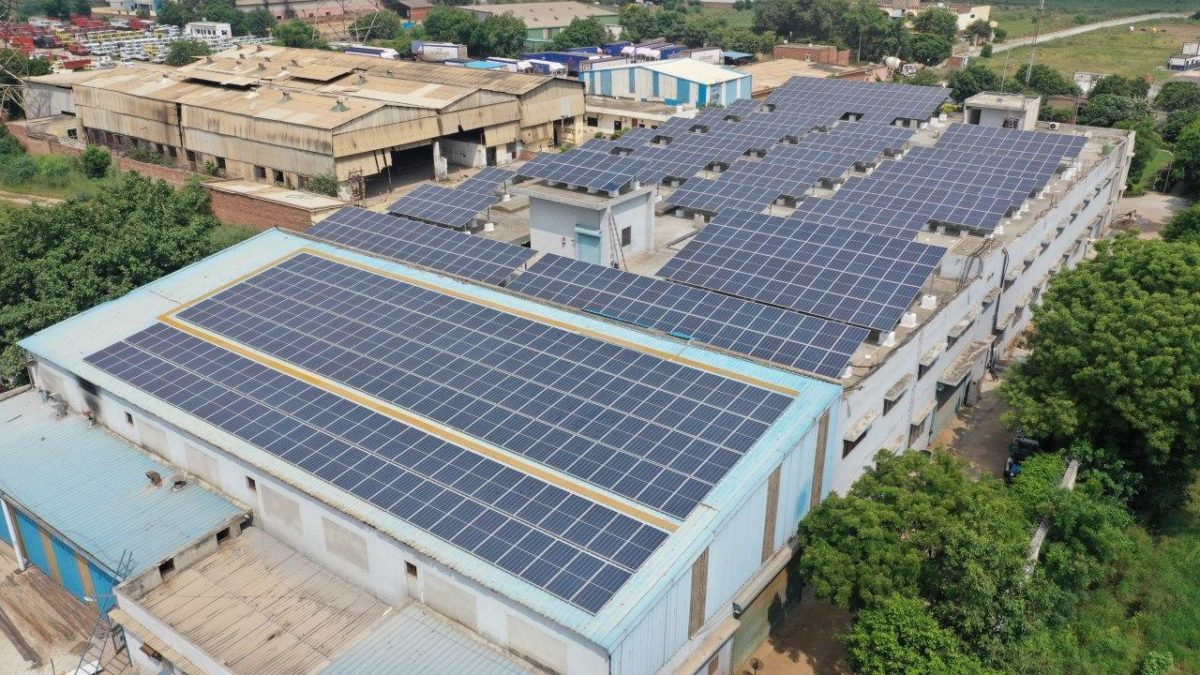India has installed a cumulative grid-connected rooftop solar capacity of 3.9 GW as of February 28, against the 40 GW by 2022 target, according to the latest data shared by the power ministry. The capacity is only around 10% of the nation’s cumulative grid-connected solar installation (39.1 GW).
With 942 MW capacity, the state of Gujarat leads in rooftop solar installation, followed by Maharashtra (694 MW) and Rajasthan (419 MW).
No rooftop solar installation has taken place in Lakshadweep and Ladakh as per the ministry’s figures.
Considering the average cost of rooftop solar plant installation as INR 5 crore/MW, the total investment made for 3.9 GW rooftop solar installation would be around INR 19,500 crore.
Initiatives
The need to approach multiple agencies was identified as one of the major reasons deterring customers from rooftop solar plant installation under the first phase of the Rooftop Solar Programme. To make the process simpler, the government has made power distribution companies (Discoms) and their local offices as the nodal points for implementing the Rooftop Solar Program’s second phase.
Phase II targets an aggregate 4 GW of grid-connected rooftop solar plants in the residential sector by providing central financial assistance (CFA). Discoms are provided incentives based on their achievement in installing additional grid-connected rooftop capacity over and above the base level. However, these incentives are limited to the first additional 18 GW rooftop capacity installed across the country.
The power ministry shared, “CFA of 40% of the benchmark cost is provided for rooftop solar projects up to 3 kW capacity and 20% for system capacity beyond 3 kW and up to 10 kW for individual households. For group housing societies/residential welfare associations, CFA is limited to 20% for rooftop solar plants of capacity up to 500 kW for the supply of power to common facilities.
“Discoms get incentives for achieving rooftop solar capacity addition in a financial year above the baseline capacity as on March 31 of the previous year. There is no incentive for capacity addition up to 10% of the baseline capacity, incentive of 5% of the benchmark cost for capacity addition beyond 10% and up to 15%, and incentive of 10% of the benchmark cost for capacity addition beyond 15%.”
Consumers willing to install rooftop solar plants under the Ministry of New and Renewable Energy’s Scheme have to pay the plant’s cost after deducting the applicable CFA. The CFA amount is paid to the vendor by the Discom.
Industrial and commercial sector consumers, where the Ministry does not provide CFA/incentive, can avail concessional loans from the World Bank and Asian Development Bank (ADB) through the State Bank of India and Punjab National Bank.
Besides, Prime minister Narendra Modi has called for a major city in every Indian state to become a solar city where all houses have rooftop solar energy plants and all the electricity needs of the city are met from solar energy or other renewable energy sources.
This content is protected by copyright and may not be reused. If you want to cooperate with us and would like to reuse some of our content, please contact: editors@pv-magazine.com.









4 comments
By submitting this form you agree to pv magazine using your data for the purposes of publishing your comment.
Your personal data will only be disclosed or otherwise transmitted to third parties for the purposes of spam filtering or if this is necessary for technical maintenance of the website. Any other transfer to third parties will not take place unless this is justified on the basis of applicable data protection regulations or if pv magazine is legally obliged to do so.
You may revoke this consent at any time with effect for the future, in which case your personal data will be deleted immediately. Otherwise, your data will be deleted if pv magazine has processed your request or the purpose of data storage is fulfilled.
Further information on data privacy can be found in our Data Protection Policy.